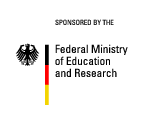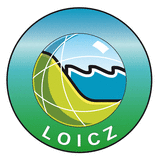Pests/diseases of concern and pesticide usage
By Toan Pham Van, Fabrice Renaud, Zita Sebesvari
Based on interviews with several members of the Department of Agriculture & Rural Development (DARD) in Can Tho (Can Tho Province) and Cao Lahn (Dong Thap Province), members of the Farmer´s Union in Ba Lang ward (Can Tho Province) and An Long Commune (Dong Thap Province), local farmers in the study site and members of the Agricultural Faculty at Can Tho University (CTU) rice pests/diseases of major concern at both study sites were identified as follows:
Brown plant hopper (BPH) Nilaparvata lugens is perceived as the most severe pest for rice in Vietnam. Direct damage is caused by feeding of the nymphs and adults causing “hopper burn” in the rice plants. Additionally, many of the brown plant hoppers are transmitter of the rice grassy stunt virus (RGSV) and/or rice ragged stunt virus (RRSV) causing severe and often epidemic-like infection of rice plants. Damages caused by BPH are followed by rice blast fungus Magnaporthe grisea. Less devastating but still considerable damages can be caused by the leaf folder caterpillar Cnaphalocrocis medinalis and snails.
Strategies to prevent or curtail the damage on the crop are e.g. planting resistant rice strains, dry sowing to avoid snails, adjusting the sowing time to the life cycle of brown plant hoppers in order to avoid heavy damages on young plants (sowing at the time the adult insects migrate), proper spacing of rice plants to avoid favourable microclimate for the brown plant hoppers, alternate drying and wetting the field during BPH outbreaks, fast elimination of single plants affected by virus infection, application of insecticides to decrease BPH population and fungicides to eliminate fungi.
Interviews and participatory rural appraisals (PRA) were carried out to determine current pesticide usage and application strategies in both study areas. Abamectin (antibiotic pesticide), Buprofezin (chitin synthesis inhibitor), Chlorpyrifos Ethyl (organophosphorus insecticide and acaricid), Cypermethrin (pyrethroid insecticide and acaricid), Difenoconazole (conazole fungicide), Dinotefuran (nicotinoid insecticide), Fenobucarb (carbamate insecticide), Hexaconazole (conazole fungicide), Niclosamide (molluscicide) and Propiconazole (conazole fungicide) have been frequently recorded in the interviews. The list of used pesticides, application time and dosage was compiled and used to identify target pesticides for the monitoring programme.




